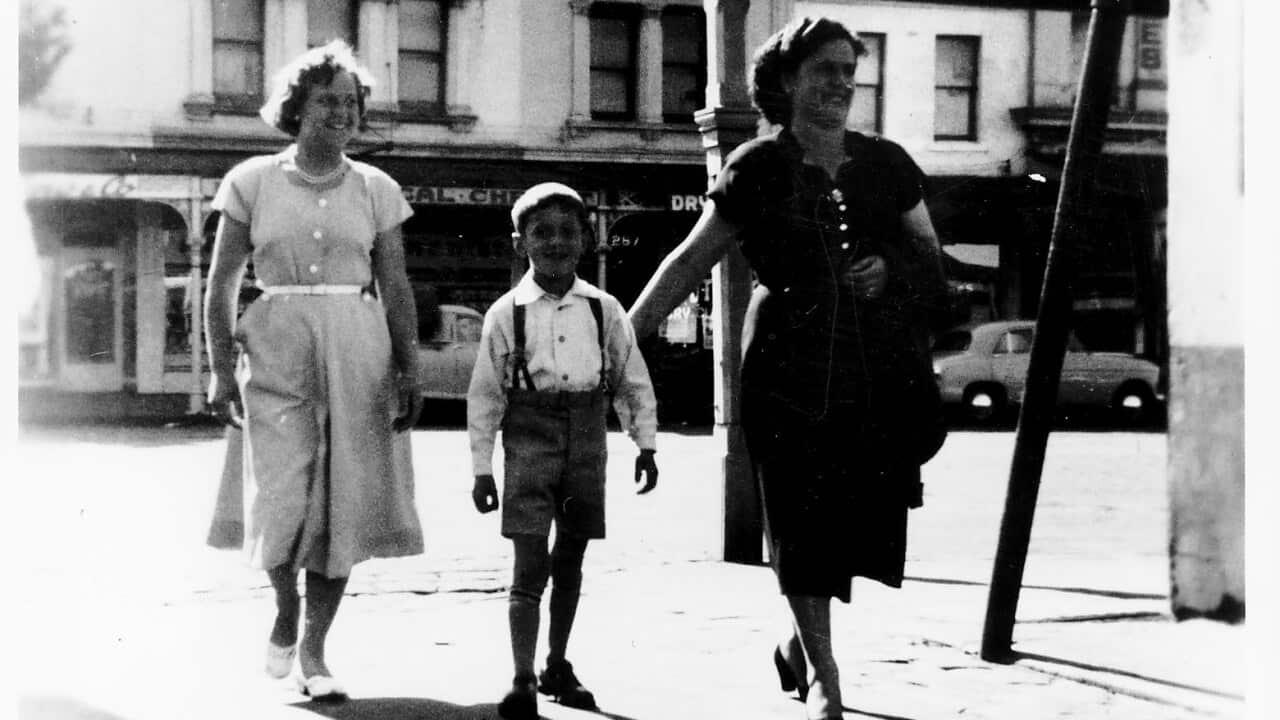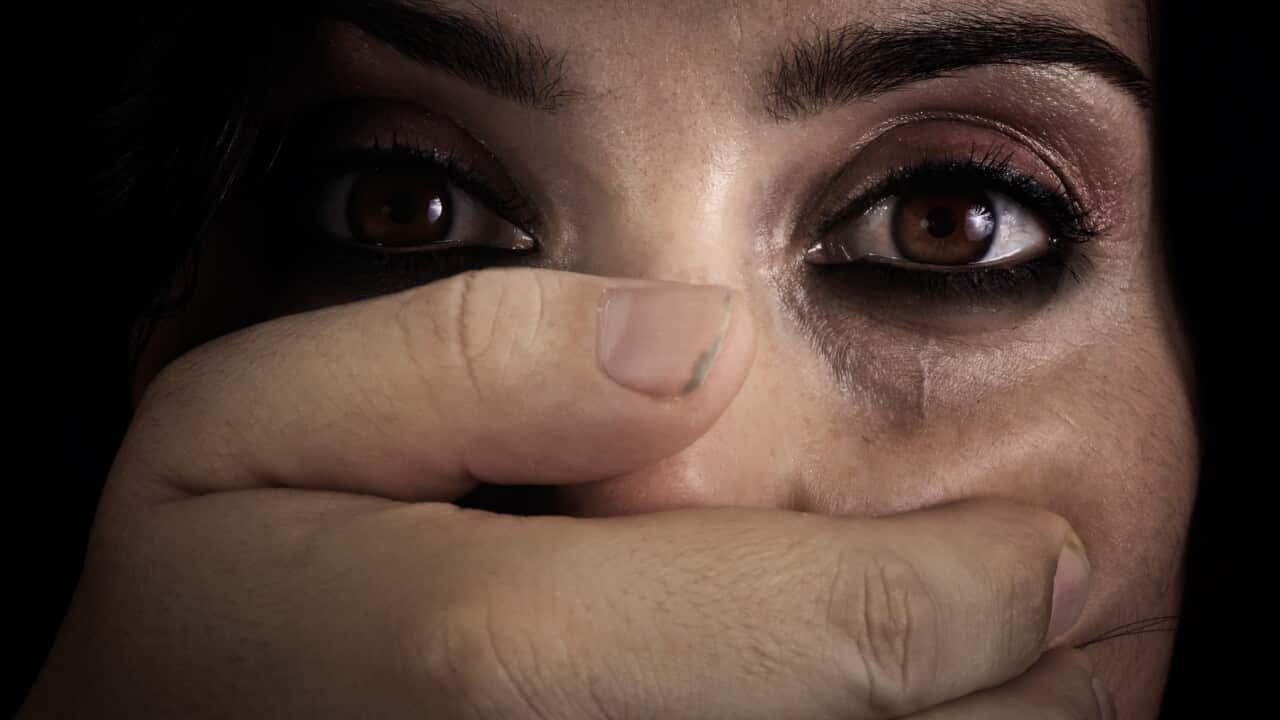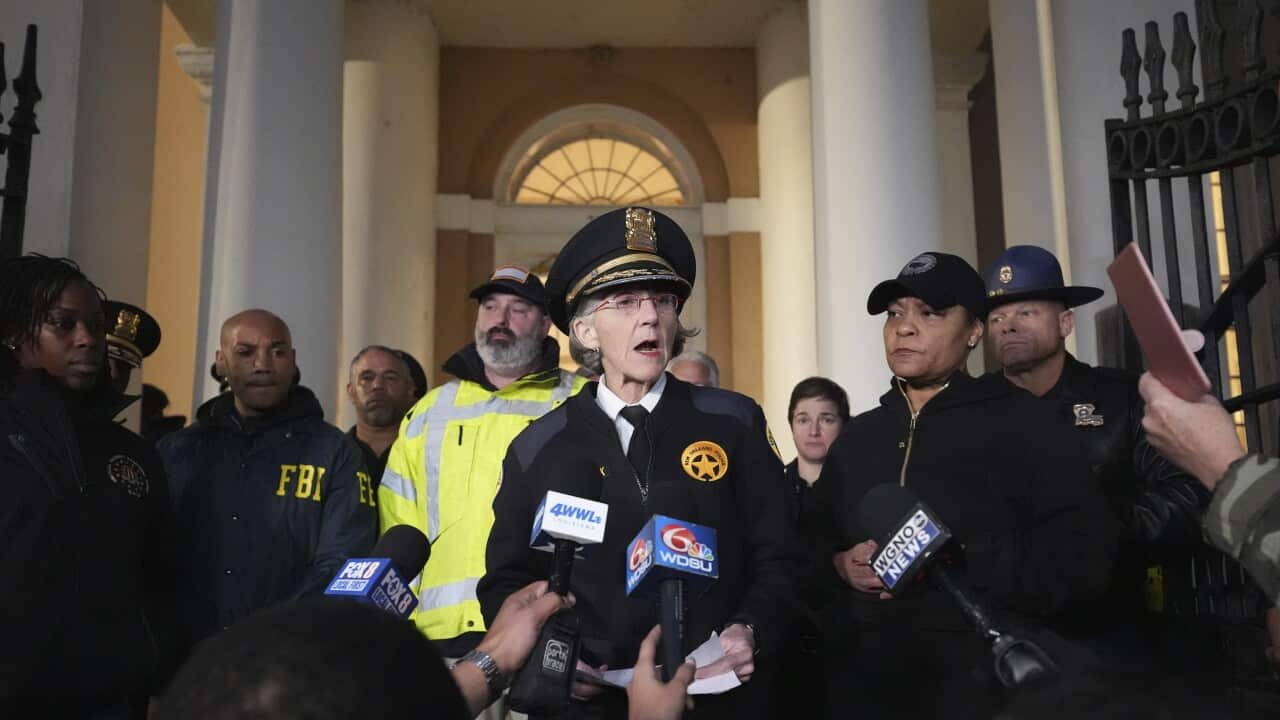The suburbs of Carlton in Melbourne and Leichhardt in Sydney, known for decades for being 'Little Italys' are no longer the cultural reference point they used to be, according to former Director of the Historic Italian Society Laura Mecca and dozens of SBS Italian listeners.
“There is still a bit of Italian culture in Lygon Street and Carlton, but these places are no longer the centre of Italian culture in Melbourne,” says historian Laura Mecca.
“If you look at the people that like visiting these suburbs regularly, you will see that often they don’t have an Italian background,” Mecca adds. Carlton became the heart of Italian culture in Melbourne starting in the 1920s and then more so in the 1950s.
Carlton became the heart of Italian culture in Melbourne starting in the 1920s and then more so in the 1950s.

Ernesto Angerame in his Lygon street shop. Photo from the Museo Italiano - CO.AS.IT. Source: Reproduced with permission of CO.AS.IT. – Italian Historical Society
“The Italian community used to be in Carlton. Now you can only find the Co.As.It, the Italian Museum, the Dante Alighieri Society. But even if you look at the people that visit the Italian Museum, you would see that the majority of those do not have Italian origins," said Mecca.
The natural change of culture in Italy also sets these areas apart, as the Italian culture remaining in the likes of Carlton is more and more distant from daily life in Italy, decades after Italians arrived.
“Also, the Italian culture you would find in these suburbs is very different from the Italian culture you would find in Italy at the present moment.”
“Young Italians these days travel and go to find the real Italian culture in Italy.
"Instead, old people gravitate around cultural clubs, but these are often struggling these days and several of the people that used these as a reference place — which are the Italians that came here in the 50s and 60s — are getting very old and in some cases are no longer alive," Mecca added.
These sentiments were echoed by several Italians who called in to speak on SBS Italian's radio program.
'No need for a Little Italy'
According to Andrea, who has been living in Melbourne for 10 years, there is no need at all for a 'Little Italy' in the Victorian capital.
"I have many Italian friends and we don't need just one place where to meet. When we meet up, we meet for dinner, a bit all across Melbourne," he said. "I like it like this. You can go to whichever suburb in Melbourne and you can find a great pizza or a great gelato.
"The advice you would get from my friends and I would be: 'You don't really need to go to Lygon Street, you won't miss anything'." Historian Mecca agrees: "To talk about Lygon Street as a Little Italy has never been quite right".
Historian Mecca agrees: "To talk about Lygon Street as a Little Italy has never been quite right".

Quinto Vendramini at the wheel of a Fiat 500 convertible. c1950. Photo from the Museo Italiano - CO.AS.IT. Source: Reproduced with permission of CO.AS.IT. – Italian Historical Society
"Lygon St is a commercial product — the real heart of Italian culture in Melbourne has always been Carlton," she adds.
The history of Carlton
“North Carlton at the end of 1800s used to be a place for poor people — very poor people — as they could not afford to live anywhere else in Melbourne," Mecca says. “It used to be a Jewish suburb. Italian migrants only started arriving in the 1920s."
“Why Carlton? Because in Carlton back then you could find rooms to rent in boarding houses. All Italians who would arrive in Melbourne at the train station in the 1920s and 1930s would ask, ‘where can I find a place to sleep?’ And they would end up in Carlton, renting a room," says Mecca.
"There were some houses with shops at the back, a university. Italians started to meet up in the cafes."
Many Italians started leaving Carlton in the '60s and '70s. Carlton remained the Italian heart of Melbourne, but decreasingly so over time, says Mecca. “What happened was, when Kodak opened in Coburg in the '60s and General Motors opened in Campbellfield, many Italians left Carlton to move close to their jobs. Priorities were different then. Cars used to be very expensive and many Italians were working two to three jobs to save enough money to buy a house.
“What happened was, when Kodak opened in Coburg in the '60s and General Motors opened in Campbellfield, many Italians left Carlton to move close to their jobs. Priorities were different then. Cars used to be very expensive and many Italians were working two to three jobs to save enough money to buy a house.

Motor car accident at the intersection of Rathdowne and Princess Streets Carlton. c1959. Photo from the Museo Italiano - CO.AS.IT. Source: Reproduced with permission of CO.AS.IT. – Italian Historical Society
“There used to be more jobs for women in Carlton because they used to work in textile factories owned by Jewish people. Then, once these factories closed, more Italians moved to different suburbs like Coburg,” Mecca explained.
Lygon Street
While the wider public sees Lygon Street as Melbourne's Little Italy, Mecca says that's not an authentic truth, and more of a commercial characterisation.
“Lygon Street is a commercial product of the last 15-20 years," says Mecca. "It is really just a conglomerate of Italian shops that actually used to be Jewish beforehand... Now there are new shop owners — some are not Italian, and this is just the natural progression of things."

Guests at the Miss Italian Community Ball 1967 at Sanremo Ballroom, North Carlton. Photo from the Museo Italiano - CO.AS.IT. Source: Reproduced with permission of CO.AS.IT. – Italian Historical Society
Leichhardt
According to SBS Italian listeners, a similar phenomenon is happening in Leichhardt in Sydney.
Marco has been living and working in Leichhardt's Norton Street for 10 years.
"Until just a few years ago it was full of Italian shops and at the weekend you could walk around feeling like you were in Italy. But that's not the case now," Marco says.
Also according to Gianni, Leichhardt is no longer a reference point for the Italian community. He blames rising rents and house prices for the change.
"There isn't one suburb in Sydney that I feel is truly Italian...Italian culture and sense of belonging are geographically widespread — like leopard skin,” says Gianni.
"Italian culture is carried on by people that keep it alive through their daily actions in their daily lives," says Armando from Sydney.
Ettore from Perth says also areas known in the Western Australian capital for being Italian, such as Fremantle, "are touristy places which do not represent true Italian culture".
"It's normal, when outside of Italy, for one to see many interpretations of Italian culture... It's like looking for Italian culture in Germany or anywhere else when you travel. You see all sorts of versions," he laughs.
The is an SBS Radio initiative to encourage and celebrate a love of learning languages in Australia. Visit to enter.




